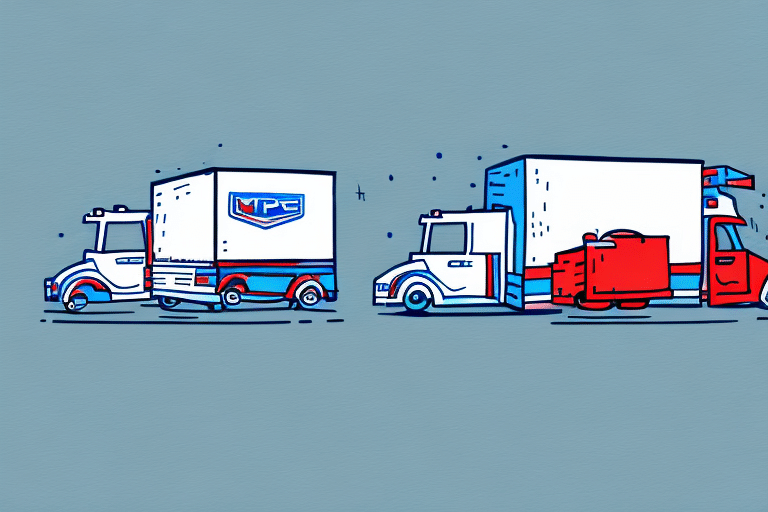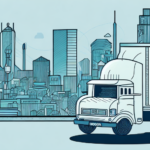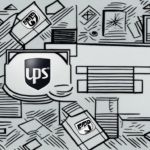Is USPS Faster Than UPS? A Comprehensive Comparison of Delivery Times
Choosing the right delivery service is crucial for ensuring your packages arrive promptly and safely. In the United States, two of the most prominent delivery services are the United States Postal Service (USPS) and United Parcel Service (UPS). This article delves into a detailed comparison of their delivery times, exploring the factors that influence their speed and other key considerations to help you make an informed decision.
Delivery Speed Overview: USPS vs. UPS
The delivery speed of your package largely depends on the service you choose. Both USPS and UPS offer a range of shipping options tailored to different needs, from standard to expedited services. Understanding these options is essential for selecting the service that best fits your time constraints.
USPS Delivery Options
- Priority Mail Express: Guarantees overnight delivery to most U.S. locations.
- Priority Mail: Typically delivers within 1-3 business days.
- First-Class Mail: Ideal for lightweight packages, with delivery usually within 1-3 business days.
UPS Delivery Options
- Next Day Air: Ensures next-business-day delivery.
- 2nd Day Air: Delivers within two business days.
- Ground: Economical option with delivery times ranging from 1 to 5 business days.
According to the USPS Service Standards and UPS Service Descriptions, both carriers offer reliable timelines, but UPS generally provides more precise delivery windows, especially for expedited services.
Factors Influencing Delivery Times
Several factors can affect the delivery speed of packages sent via USPS and UPS. These include:
Distance and Geography
The farther the distance between the sender and the recipient, the longer the delivery time. Both USPS and UPS have extensive networks, but UPS tends to perform better in densely populated urban areas due to its robust infrastructure.
Package Size and Weight
Larger and heavier packages may take longer to process and transport. UPS often handles bulkier shipments more efficiently, while USPS is optimized for smaller parcels and letters.
Service Type Selected
The choice between standard and expedited services plays a significant role in delivery speed. Expedited services come at a higher cost but ensure faster delivery times.
Operational Efficiency
Both carriers invest in advanced logistics and automation technologies. UPS, for instance, uses sophisticated routing algorithms to optimize delivery paths, potentially offering faster services.
Comparing Delivery Networks
The scope and efficiency of a delivery network directly impact delivery times.
USPS Network
With over 31,000 post offices and a presence in every U.S. address, USPS offers unparalleled coverage, including remote and rural areas. However, the extensive reach can sometimes lead to longer processing times for packages.
UPS Network
UPS operates a vast network of distribution centers and utilizes regional hubs to streamline deliveries, especially in urban and suburban areas. This focused approach can result in faster delivery times within these regions.
Cost Analysis: USPS vs. UPS
Shipping costs vary based on service type, package dimensions, weight, and destination. Here's a comparative analysis:
USPS Pricing
- Priority Mail starts at approximately $7.35 for small packages.
- First-Class Mail is cost-effective for lightweight items, starting around $3.80.
UPS Pricing
- UPS Ground starts at about $8.50 for small packages.
- Next Day Air services are more expensive, often exceeding $25.
According to USPS Pricing Guidelines and UPS Shipping Schedules, USPS generally offers more affordable rates for smaller and lighter packages, while UPS provides competitive pricing for larger and expedited shipments.
Reliability and Tracking Capabilities
Reliable delivery and effective tracking systems are paramount for both individuals and businesses.
USPS Tracking
USPS provides basic tracking information for most services, including scan updates and delivery confirmations.
UPS Tracking
UPS offers more detailed tracking features, including real-time location updates and estimated delivery times through its UPS My Choice service.
According to a study by Inbound Logistics, UPS generally outperforms USPS in tracking accuracy and reliability, especially for high-value shipments.
Technological Innovations Driving Delivery Speed
Advancements in technology have significantly enhanced the delivery capabilities of both USPS and UPS.
Automation and Robotics
Both carriers utilize automated sorting systems to expedite package processing. UPS's investment in robotics has streamlined its operations, resulting in faster handling times.
Drones and Autonomous Vehicles
Innovations such as drone deliveries are being explored to reach remote areas quickly. UPS has conducted successful trials with its Flight Forward drone program, aiming to reduce delivery times for medical supplies.
Data Analytics and Predictive Modeling
UPS employs advanced data analytics to optimize delivery routes, reducing transit times and improving efficiency. USPS is also adopting predictive modeling to enhance its service reliability.
Further information can be found in the UPS Technology Services and the USPS Technology Initiatives.
Customer Satisfaction and Reviews
Customer feedback reflects the strengths and weaknesses of each service.
USPS Customer Feedback
Customers appreciate USPS for its extensive coverage and affordability, especially for domestic and lightweight shipments. However, some express concerns over inconsistent delivery times and customer service responsiveness.
UPS Customer Feedback
UPS is often praised for its reliable delivery schedules and superior tracking capabilities. While more expensive, many customers find the premium services worth the cost. Some users report occasional delays during peak seasons.
According to Consumer Reports, both USPS and UPS receive high marks for reliability, with UPS slightly edging out USPS in overall customer satisfaction.
The Future of Package Delivery: Trends and Predictions
The landscape of package delivery is rapidly evolving, influenced by technological advancements and changing consumer expectations.
Sustainable Delivery Practices
Both USPS and UPS are investing in eco-friendly delivery methods to reduce their carbon footprints. UPS's commitment to electrifying its fleet by 2023 exemplifies this trend.
Enhanced Last-Mile Delivery Solutions
Innovations like electric bikes and local distribution hubs are being implemented to expedite last-mile deliveries, particularly in urban areas.
Integration of Artificial Intelligence
AI is being leveraged to predict delivery patterns, manage inventory, and optimize logistics, further enhancing delivery speed and efficiency.
For more insights, refer to the UPS Pressroom and the USPS Newsroom.
Conclusion: Making the Right Choice for Your Shipping Needs
Both USPS and UPS offer reliable and efficient delivery services, each with its unique strengths. USPS excels in affordability and extensive coverage, making it ideal for small and domestic shipments. UPS, with its robust tracking and expedited services, is better suited for larger or time-sensitive deliveries.
Consider the following when making your choice:
- Budget: USPS is generally more cost-effective for smaller packages.
- Delivery Speed: UPS offers faster and more reliable expedited services.
- Package Size: UPS handles larger packages more efficiently.
- Tracking Needs: UPS provides more comprehensive tracking features.
By evaluating your specific shipping requirements against the offerings of USPS and UPS, you can select the service that best aligns with your needs, ensuring timely and secure delivery of your packages.






















